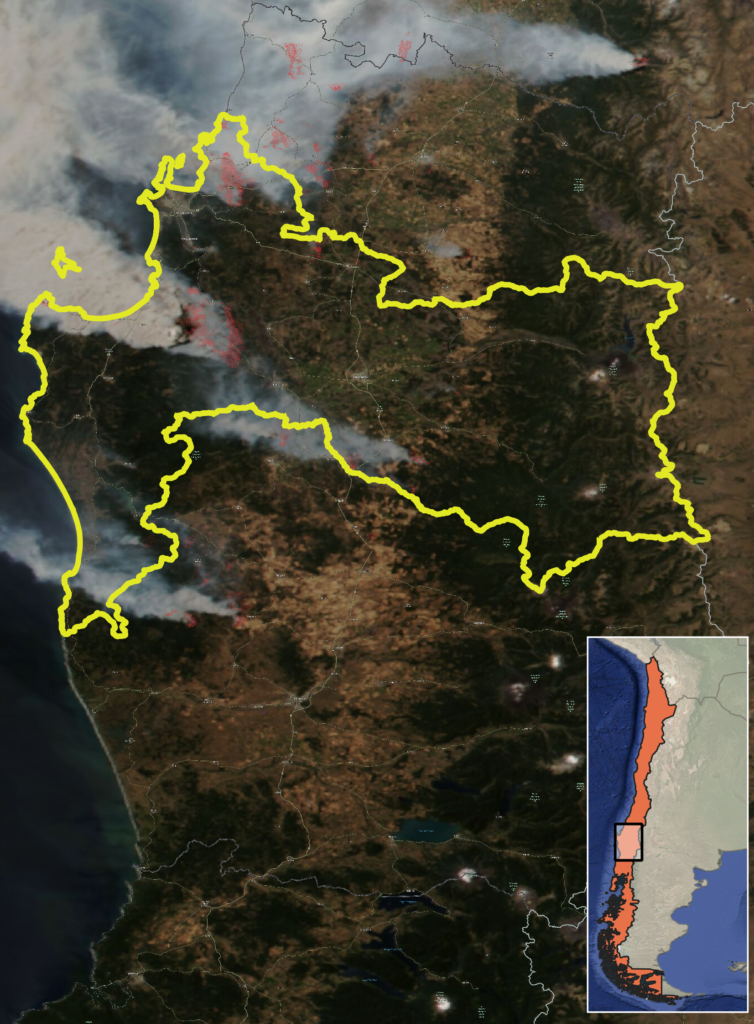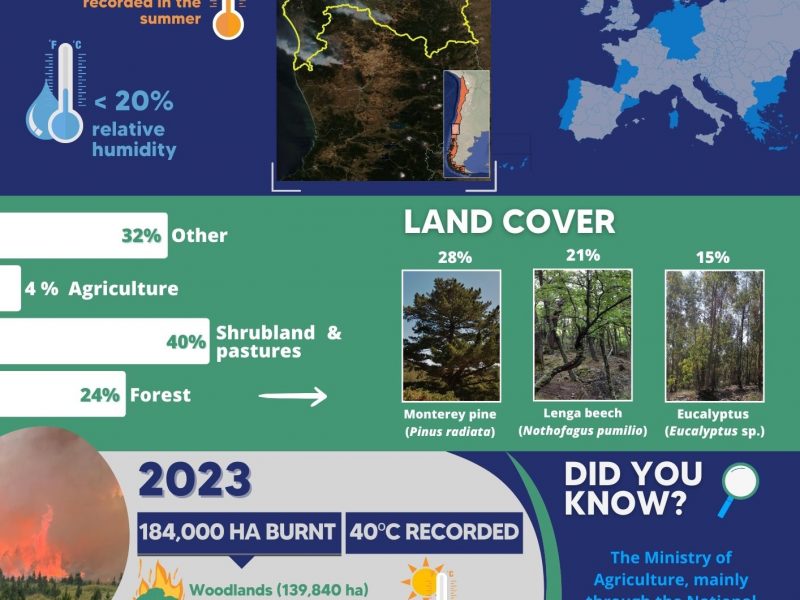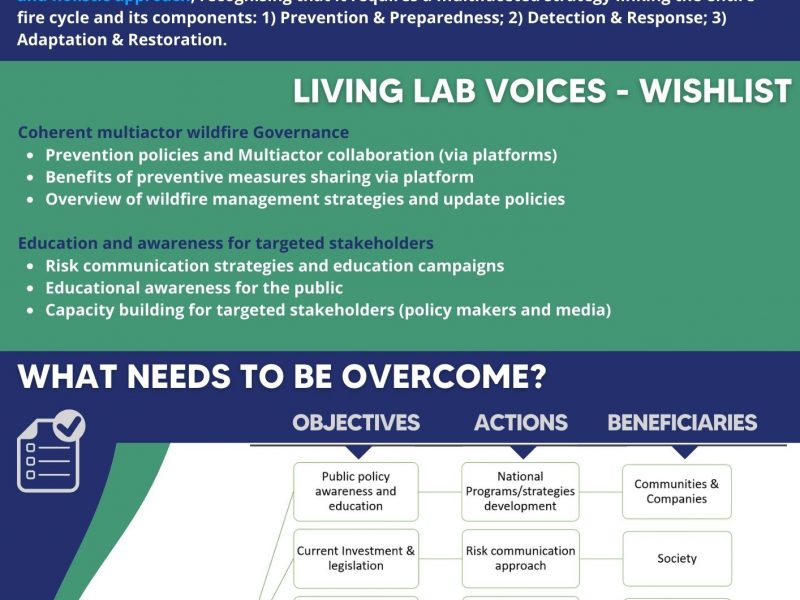CONTEXT
The Living Lab Chile comprises the entire Biobio Region. It has a very diverse composition not just at a landscape level but also at an anthropogenic level, with 2 major forestry companies, 100 medium and more than 4,000 small forest owners spread over 23,890 km².
In the last five-year period, this region has been one of the most affected by wildfires, with an average of about 2,454 occurrences/year with more than 246,215 hectares affected in total.
FIRE MANAGEMENT IN CHILE
By law, the fire management is in charge of the Ministry of Agriculture, which is exercised through the National Forestry Corporation (CONAF).
At the same time, some forest owners have their own specialized personnel to face forest fires. Both organisms work together in prevention and suppression.
Prevention is done by conventional preventive silviculture techniques and fire suppression techniques occur through direct and indirect techniques.

CHALLENGES
- Landscape data are not actualized
- Low resolution of climate and weather data
- The large number of landowners in the area may make it difficult to achieve representative participation
Factsheets
A set of factsheets was produced by forestWISE to interactively complement the information available on the Living Lab.
PARTNERS
{{ group }}
{{ object.name }}
{{ object.name }}
{{ object.subheader }}
{{ icon.replace(/^icon_/, '') }}
{{ label }}
Contact

Rodrigo Mahaluf
- Instituto Sistemas Complejos de Ingegneria (ISCI)
- rodrigo.mahaluf@ug.uchile.cl

